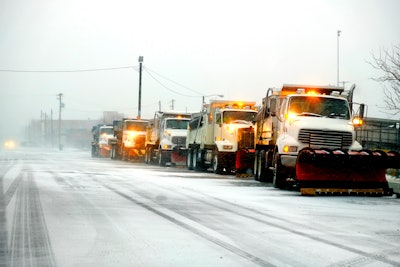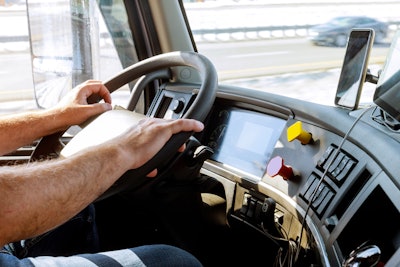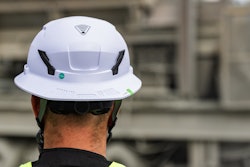
Safety is critical for every fleet and driver. Drivers are the lifeblood of the supply chain and keeping them safe is an essential value of the transportation industry. Accidents are not only harmful to the people involved, but also to carriers and vendors that experience financial losses, shipment delays, talent recruiting issues and other ramifications.
Trucks, especially large commercial carriers, populate our cities and highways on a daily basis. Heavy levels of truck traffic in different areas of the country also pose higher risks for accidents, but encouragingly, recent data from the Federal Motor Carrier Safety Administration (FMCSA), shows deaths from crashes involving at least one large truck fell 11% in 2023.
Biggest Safety Risks
The ultimate goal is to continue lowering incident statistics each year and help improve driver safety resources and training opportunities for fleets. Below are some of the biggest safety risks that commercial truck drivers face today:
- Driver Fatigue: One of the most significant challenges in truck safety is driver fatigue. Long hours on the road, plus tight delivery schedules, can lead to drowsy driving and mistakes. The FMCSA has implemented Hours of Service (HOS) regulations to limit the number of hours a truck driver can operate a vehicle—an important regulation to remove tired and accident-prone drivers off the road.
- Distracted Driving: The use of mobile phones and other electronic devices by truck drivers while driving is increasingly a problem. While many trucking companies have implemented policies against mobile device use while on the road, hands-free mobile device holders and technologies that lock drive screens while the truck is in motion can still allow drivers to utilize routing/mapping tools, delivery documentation apps and other digital solutions that make their jobs easier and more efficient, while remaining compliant with FMCSA regulations.
- Road Conditions and Weather: Poor road conditions and inclement weather can contribute to accidents. Inadequate signage, road construction, poorly maintained roadways and storms (rain, snow, ice, wind) all pose risks, especially for large, heavy vehicles that require more space for stopping and time to maneuver turns.
- Vehicle Maintenance: Proper maintenance of trucks is crucial for safety. Mechanical failures, such as brake malfunctions or tire blowouts, can lead to unforgiving accidents. Using a preventative maintenance strategy and ensuring trucks are regularly inspected and serviced according to manufacturer and regulatory standards is essential for reducing maintenance-related incidents.
Common Trucking Accidents
Based on FMCSA research, one of the most common types of critical events for trucks is rear-end crashes, accounting for 22% of truck accidents. This type of incident involves a semi-truck driver hitting another vehicle from behind. Common causes of rear-end truck accidents include speeding, distracted driving, impaired driving, defective truck brakes and faulty truck lights.
Another common type of accident for trucks is running off the road or veering into another lane (32%), primarily due to speed, distractions, fatigue, or driving under the influence. It’s shown to be a widespread problem among newer truckers who aren’t professionally trained or experienced.
We’re also seeing a lot of backing accidents, mainly because drivers are in a hurry or willing to take a chance and back up without getting out to ensure they have proper clearance. Furthermore, drivers often feel rushed to get their trailer backed in so they’re not holding up other drivers.
Nearly all backing crashes could be avoided if the driver took a few more seconds, and other drivers were more patient. We’ve frequently seen impatient drivers try to pass or zip around a truck that is backing up or making a turn – putting everyone in harm’s way. Below are a few common-sense ways commercial vehicle drivers can avoid backing accidents:
- Walk around the vehicle: Check for potential hazards like other trailers, children, low-hanging wires, dumpsters, dock workers or tight spaces.
- Use a spotter: Especially in difficult situations, like backing in off a road, use a spotter to help control traffic and pedestrians.
- Install cameras: Side-mounted cameras that activate while in reverse and can be viewed on the driver's tablet are a valuable aid while backing.
Every year the number of truck crashes increases during the winter months, but understanding the preventive techniques to avoid a crash caused by poor traction and poor visibility can greatly reduce the incidence of accidents during our coldest months.
 Accidents are not only harmful to the people involved, but also to carriers and vendors that experience financial losses, shipment delays, talent recruiting issues and other ramifications.@ungvar - adobe.stock.com
Accidents are not only harmful to the people involved, but also to carriers and vendors that experience financial losses, shipment delays, talent recruiting issues and other ramifications.@ungvar - adobe.stock.com
Technology Creating a New Norm
Technology is making a big impact when it comes to truck driver safety and communication between drivers and back-office teams. These solutions span a wide range of capabilities, from collision mitigation to road-and-driver-facing cameras, lane keep and electronic roll stability features, to dynamic speed management to telematics. Adoption of these safety-focused tools are on the uptick.
Another recent FMCSA report found that the average adoption level of advanced driver assistance systems (ADAS) technology by both carriers and drivers has increased. The pandemic also accelerated technology use, with 96% of carriers and 86% of shippers moving to cloud-based systems.
The emergence of video intelligence and telematics solutions, in particular, is gaining steam with fleets building best practices and programs for their drivers. These solutions are providing real-time guidance to drivers on routes and can trigger event recordings to replay and analyze different situations. Fleets can choose preferred camera configurations based on their types, size and safety goals.
For many drivers, a notable advantage of using a driver-facing camera is showing and rewarding attentive behavior and decision-making. Recordings are also used to train drivers on a wide range of scenarios they may encounter, or to call attention to the frequency of unsafe behaviors, such as mobile phone usage.
Looking Ahead
Artificial intelligence (AI) will continue to advance video technology and other digital applications to help determine which drivers are most at risk for crashes. In the future, coaching will become even more timely and precisely matched to the true behavior that is causing concern.
Coupled with innovative technology, fleets should continue to prioritize and revisit their driver training programs. The most successful fleets have many touch points for their safety training programs, including sharing regular safety tips, sending weekly safety messages, hosting monthly safety trainings, including specialized winter driving clinics, to keep the essential value of driver safety – always front and center.



















